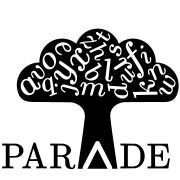Portfolio
Digital cartography of new materialism

| Applicant | Evelien Geerts |
| Developer |
Alex Hebing Dr. José de Kruif |
| Links | Homepage |
A fine example of the reciprocity of research and digital tools: with this digital critical cartography, a creative representation of Evelien Geerts’ situated findings concerning contemporary new materialist thought, without however ‘trapping’ these mapped out stellar constellations and interlinkages in a fixating logics of representation or ‘tracing’, is depicted. Geerts writes:
“While collaborating with Utrecht University’s Digital Humanities Lab’s team, I realized that a network-focused depiction of several new materialisms, their most important authors and key concepts, would make an interesting addition to my dissertation project (‘Materialist philosophies grounded in the here and now. Critical new materialist constellations & interventions in times of terror(ism)’, see link below), as such a ‘lively’ digital depiction would focus on the complex intra-actions between various new materialist strands of thought.”
“One thing immediately became clear when trying to come up with the ‘data’ needed to design this networks & nodes-focused cartography, and that is the fact that this turned out to be a diffractive thinking, writing, and assembling process all in one. I came up with the idea of using an Excel sheet, selecting the in my regard most interesting new materialist or related thinkers – and that either on the basis of how many times they were mentioned in the dissertation or because I had discovered that their work had either a lot or almost nothing in common with other thinkers that were going to be included in the mapping project. I thus intentionally looked for the more ‘provocative’ thinkers, and did so from within my situated interpretation and framing of current-day new materialist thought, which, to accentuate this again, means that just like its textual counterpart, this digital map is non-exhaustive and open-ended of nature. The selection of the concepts, by the way, took way longer than expected: I decided to select and use a lot of the concepts from the dissertation itself, but also went through various authors’ books and specifically book indexes to find useful concepts. I initially expected to come up with a simple list of authors, concepts and weight attributed to these concepts (i.e. in this case a number between 1-5, with 1 denoting ‘little to no relevance’ and 5 ‘high relevance’, which, again, were decisions based on my personal situated take and interpretation) after having mapped the new materialist assemblages.”
“What ended up unfolding itself, turned out to be a way less linear process: I in the end actually went back to the text of the second chapter to rewrite and edit it alongside the selecting of said data and designing of the map, as unexpected linkages arose. This digital critical cartographical mapping process can thus indeed be seen as diffraction-in-action.”



